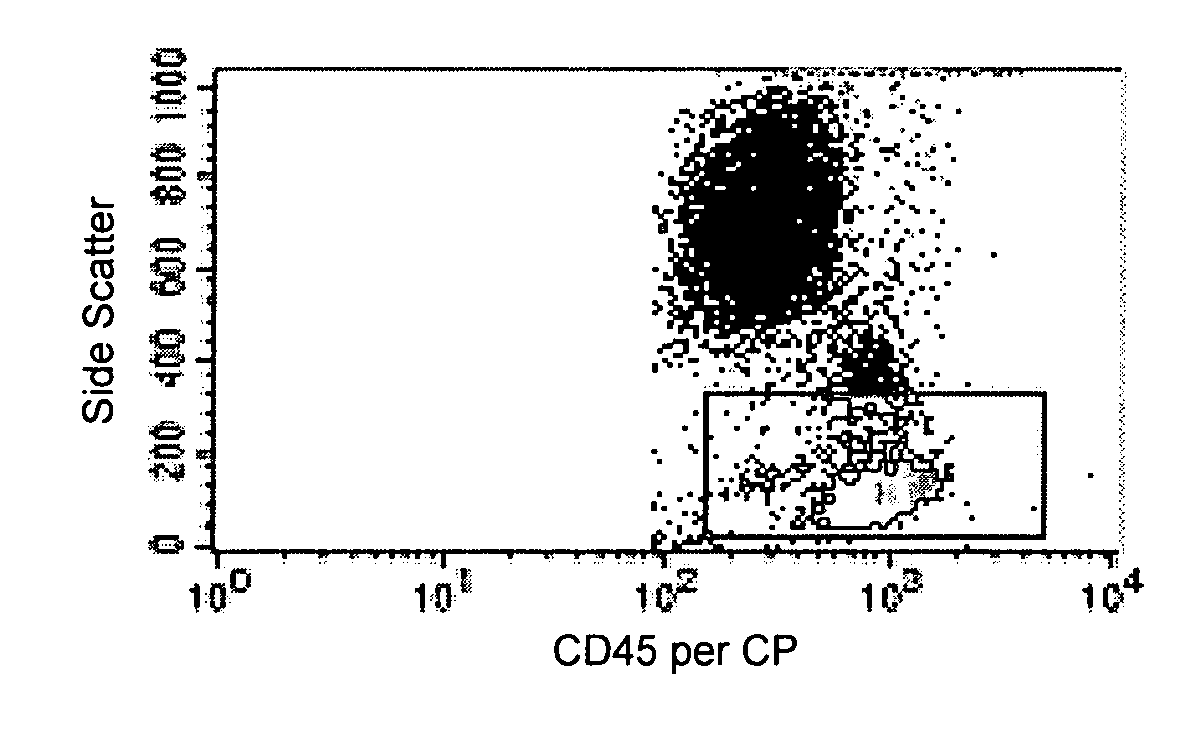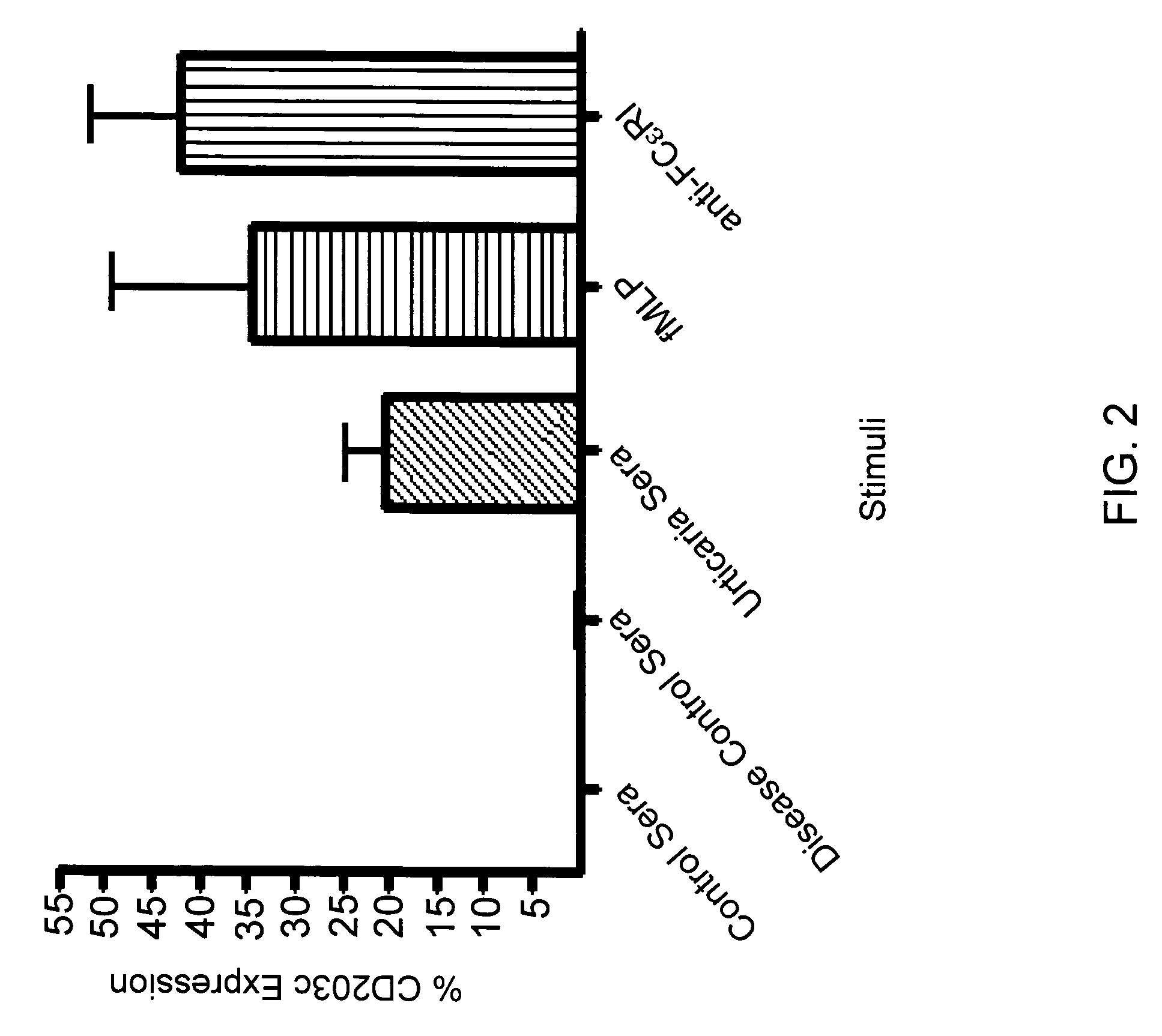Method and kit for detection of autoimmune chronic urticaria
a technology for autoimmune chronic urticaria and kit, which is applied in the field of method and kit for diagnosis of autoimmune chronic urticaria, can solve the problems of time-consuming and inability to identify antibodies with histamine-releasing properties
- Summary
- Abstract
- Description
- Claims
- Application Information
AI Technical Summary
Benefits of technology
Problems solved by technology
Method used
Image
Examples
example 1
[0087] The following example demonstrates that CD203c expression on basophils from chronic urticaria patients is elevated.
[0088] CD203c expression was higher in basophils incubated with sera from CU patients compared to normal control individuals (FIG. 2). The mean percent basophil CD203c expression of 11 normal control individuals was −0.6%±0.1 (±SEM) versus 20%±4 in 32 CU patients (p=0.002). Sera from patients with high-titer ANAs (disease controls) did not induce basophil CD203c expression. The mean values of the positive controls fMLP and anti-FcεRIα were 34.5%±14.6 and 41.9%±9.4 (n=4), respectively.
[0089] CD203c expression was significantly higher after incubation of basophils with sera from ASST positive CU patients than normal control sera (p<0.001) (FIG. 3). The mean percent CD203c expression was 30%±5 (SEM) (n=22) in basophils incubated with positive ASST positive CU sera versus −0.6%±0.1 for normal control sera (n=11). The range of percent CD203c expression in cells incu...
example 2
[0090] The following example demonstrates that CD203c expression in autoimmune CU patients correlates with basophil histamine release.
[0091] BHR was performed in 10 patients with negative ASSTs and in 18 patients with positive ASST. All sera were not analyzed due to insufficient quantity. In patients with negative ASST, 1 of 10 (10%) had a positive BHR, and 4 of 18 (22%) of patients with positive ASSTs had a negative BHR. The percent CD203c expression correlated with the percent histamine release (R=0.6, p=0.001) (FIG. 4). The sensitivity, specificity, positive predictive value and negative predictive value were calculated using the BHR assay as the gold standard to identify functional antibodies to the FcεRIα receptor, and using >5% CD203c expression as the cut-off value for a positive test. Using these criteria, CD203c expression demonstrated a sensitivity of 77%, specificity of 82%, a positive predictive value of 83% and a negative predictive value of 75%.
example 3
[0092] The following example demonstrates a correlation between ASST and CD203c expression.
[0093] The mean diameter of the serum autologous skin test was compared to percent CD203c expression. Results demonstrated a significant correlation between the size of the ASST and CD203c expression (R=0.5, p=0.02) (FIG. 5).
PUM
 Login to View More
Login to View More Abstract
Description
Claims
Application Information
 Login to View More
Login to View More - R&D
- Intellectual Property
- Life Sciences
- Materials
- Tech Scout
- Unparalleled Data Quality
- Higher Quality Content
- 60% Fewer Hallucinations
Browse by: Latest US Patents, China's latest patents, Technical Efficacy Thesaurus, Application Domain, Technology Topic, Popular Technical Reports.
© 2025 PatSnap. All rights reserved.Legal|Privacy policy|Modern Slavery Act Transparency Statement|Sitemap|About US| Contact US: help@patsnap.com



